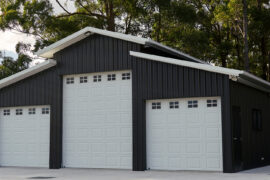Aussies love our working dogs – but are they right for your family? Sally Purbrick-Illek shares her story and tips on how to keep working dog breeds happy in an urban environment.
–
I grew up in Oregon, USA, and as a kid I wanted to be a vet. I ended up being a maths and science teacher, following in my nuclear physicist father’s footsteps! I’ve always loved animals and would bring strays home and help my grandparents on their hobby farm.
My husband and I spent our young adult life travelling and working around the world, and we couldn’t have pets. We moved to Australia in 2004 and with space and plans to settle, the first thing we did was adopt Lucy, a German Shepherd x Shar-Pei, from the Animal Welfare League (AWL). Lucy adored kids and we visited schools a few times a week with the AWL’s SHARE Reading Dogs program.
She was a wonderful dog – we were devastated when she died. Our home felt empty and we knew we’d adopt another dog. I’m sporty so researched breeds that need an active owner. We rescued Pepper, a 6-month-old border collie x kelpie, who came from a life of abuse. She was incredibly timid and scared of everything, so to build her confidence we tried agility training. She loves it and is also successful in other dog sports like tracking and scent work.

Champ, a four-year-old border collie with hip dysplasia, also joined our pack. Happily, after intensive physical therapy and a raw food diet, he is once again able to herd! We have won several titles in sheep and duck herding. Champ also has a beautiful temperament, and we volunteer at an assisted care facility, with the SHARE Reading Dogs Program, the Pre-Schoolers Overcoming (dog) Phobia Program and the Australian Veterinary Association Pet PEP program.
I’ve recently added a third dog to my family, puppy Jazz, who is a working border collie and shows great promise as a herding dog.
I’ve now had a lot of experience with working dog breeds like border collies, cattle dogs and kelpies, and I’m passionate about helping other people understand how to give their dogs the best life possible. Working dogs make wonderful pets, but they need to be in an appropriate home. A bored or under-exercised dog can be highly destructive and bark anxiously. I have encountered many working dogs that are re-homed or sent to shelters because their basic needs were not met. For example, near to where I live, there were two border collies who were being kept in a pool enclosure while the owners were away. They were bored and barked constantly. During a thunderstorm one of them got scared, jumped the fence and escaped. I’m aware the council was notified. Not long afterwards the dogs disappeared – hopefully to a new home with responsible owners.

Keeping working dogs happy in an urban environment, top tips:
- BEFORE you adopt, do your homework – can you cater to the breed’s specific needs?
- You’ll need a fence that can’t be jumped, and a gate that a dog can’t learn to open!
- Make sure your pooch is content while you’re out. There are toys and treats designed to keep dogs engaged. Arrange for family to visit or play dates with friends who have dogs.
- Working dogs need two walks a day for at least 30 minutes or vary this with play time in an off-leash park. These dogs are intelligent and need stimulation outside of your own place, even if you have a big backyard.
- Get involved in dog sports or volunteering – activities that keep both you and your pet healthy and happy.
Sally is a dog trainer specialising in urban based working breeds, find out more on Facebook or email Sally: [email protected]





